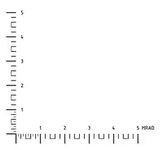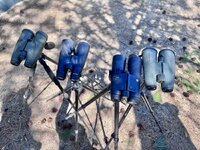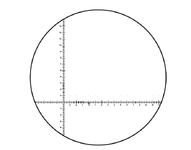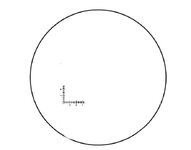- Joined
- Oct 22, 2014
- Messages
- 12,557
This will be an ongoing look at the Zeiss 15x56mm binoculars with mil reticle. They are and will be compared side by side with Swarovski SLC 15x56mm and Leica 15x56mm Geovid R’s, Meopta B1 Plus, as well as several others.
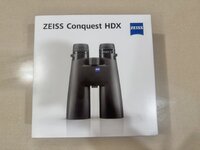
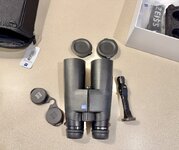
First look:
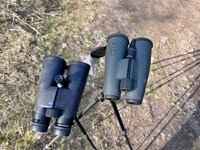
Swaro at 1,100’ish yards-
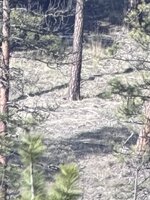
Zeiss-
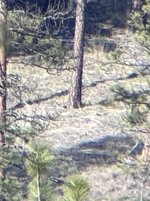
Here you can see that overall the image and details are softer in the Zeiss- the actual image is better than the pictures for the Swaro, about the same’ish for the Zeiss- but the differences between them is about right.
The reticle is right in the FOV of the left eye, and like most is pretty distracting when trying to glass or spot shots for another shooter.
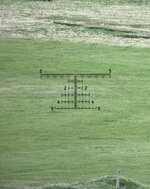
The first field use was at the April Shoot2Hunt course. Spotting shots and a bit of glassing for 4 days. There were some pluses and minuses to the Zeiss.
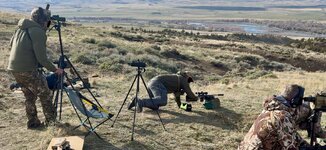
“Glass”
Overall good. When focused perfectly the image has good resolution, clarity, contrast and color. The Swaro 15x’s are better in every category however. The real issue with the Zeiss is the extremely shallow depth of focus (DOF). If you get them focused perfectly on the target- no issue; however, even a very slight change in range causes the image to be noticeably soft/blurry/off. Focused at 100 yards, 105 yards is noticeably wrong.
This really shows up when trying to use the reticle at 100 yards to measure the offset for a zero correction, and when trying to spot in natural broken environments- being so picky at focus makes getting them right for quick shots (or spotting in general), much more finicky than it should. Not so with the Swarovski 15’s.
Reticle
This is where issue with them shows up. Like most, Zeiss put the reticle just below center- smack in the middle of the FOV. On top of that, the reticle is thick and a full tree- none of which is needed or desired at all. You do not (should not) place the reticle smack on the center of the target while somebody shoots- all that does is block your FOV from seeing trace, hits, splash. Furthermore, you do not need a full tree reticle- you just need a scale to reference the target to make corrections. There is no, or extremely limited benefit to a tree- all it does is clutter and obscure the target and surroundings.
On top of that, the reticle should not be thick- it just covers up the target and surrounding area and makes missing trace, hits, splashes much more likely. On a perfect range it may not matter as much, however in broken terrain, varying light, blended targets, etc.- it matters a whole lot.
I want to give the benefit of the doubt and say “well, they were made for PRS”. The issue there is that it is just as wrong/a hindrance in precision field shooting as it is for hunting.
Being blunt- reticles in the center of the FOV are amateurish. It just says that the company/designers don’t understand what they are actually doing. They aren’t aiming devices- they are “seeing” devices, and blocking the most important part of the image is counterproductive to “seeing”.
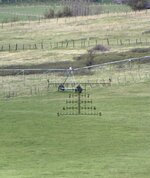
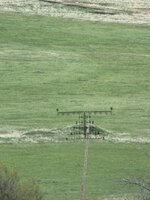
Conclusion to initial use:
Despite the noted issues with the reticle, DOF, and slightly soft image- they actually are pretty decent so far. As I get more use on them spotting in bear season, at multiple S2H classes, maybe a comp or two, and with more people using them and giving feedback- I’ll have a lot better grasp of where they stand.


First look:

Swaro at 1,100’ish yards-

Zeiss-

Here you can see that overall the image and details are softer in the Zeiss- the actual image is better than the pictures for the Swaro, about the same’ish for the Zeiss- but the differences between them is about right.
The reticle is right in the FOV of the left eye, and like most is pretty distracting when trying to glass or spot shots for another shooter.

The first field use was at the April Shoot2Hunt course. Spotting shots and a bit of glassing for 4 days. There were some pluses and minuses to the Zeiss.

“Glass”
Overall good. When focused perfectly the image has good resolution, clarity, contrast and color. The Swaro 15x’s are better in every category however. The real issue with the Zeiss is the extremely shallow depth of focus (DOF). If you get them focused perfectly on the target- no issue; however, even a very slight change in range causes the image to be noticeably soft/blurry/off. Focused at 100 yards, 105 yards is noticeably wrong.
This really shows up when trying to use the reticle at 100 yards to measure the offset for a zero correction, and when trying to spot in natural broken environments- being so picky at focus makes getting them right for quick shots (or spotting in general), much more finicky than it should. Not so with the Swarovski 15’s.
Reticle
This is where issue with them shows up. Like most, Zeiss put the reticle just below center- smack in the middle of the FOV. On top of that, the reticle is thick and a full tree- none of which is needed or desired at all. You do not (should not) place the reticle smack on the center of the target while somebody shoots- all that does is block your FOV from seeing trace, hits, splash. Furthermore, you do not need a full tree reticle- you just need a scale to reference the target to make corrections. There is no, or extremely limited benefit to a tree- all it does is clutter and obscure the target and surroundings.
On top of that, the reticle should not be thick- it just covers up the target and surrounding area and makes missing trace, hits, splashes much more likely. On a perfect range it may not matter as much, however in broken terrain, varying light, blended targets, etc.- it matters a whole lot.
I want to give the benefit of the doubt and say “well, they were made for PRS”. The issue there is that it is just as wrong/a hindrance in precision field shooting as it is for hunting.
Being blunt- reticles in the center of the FOV are amateurish. It just says that the company/designers don’t understand what they are actually doing. They aren’t aiming devices- they are “seeing” devices, and blocking the most important part of the image is counterproductive to “seeing”.


Conclusion to initial use:
Despite the noted issues with the reticle, DOF, and slightly soft image- they actually are pretty decent so far. As I get more use on them spotting in bear season, at multiple S2H classes, maybe a comp or two, and with more people using them and giving feedback- I’ll have a lot better grasp of where they stand.

